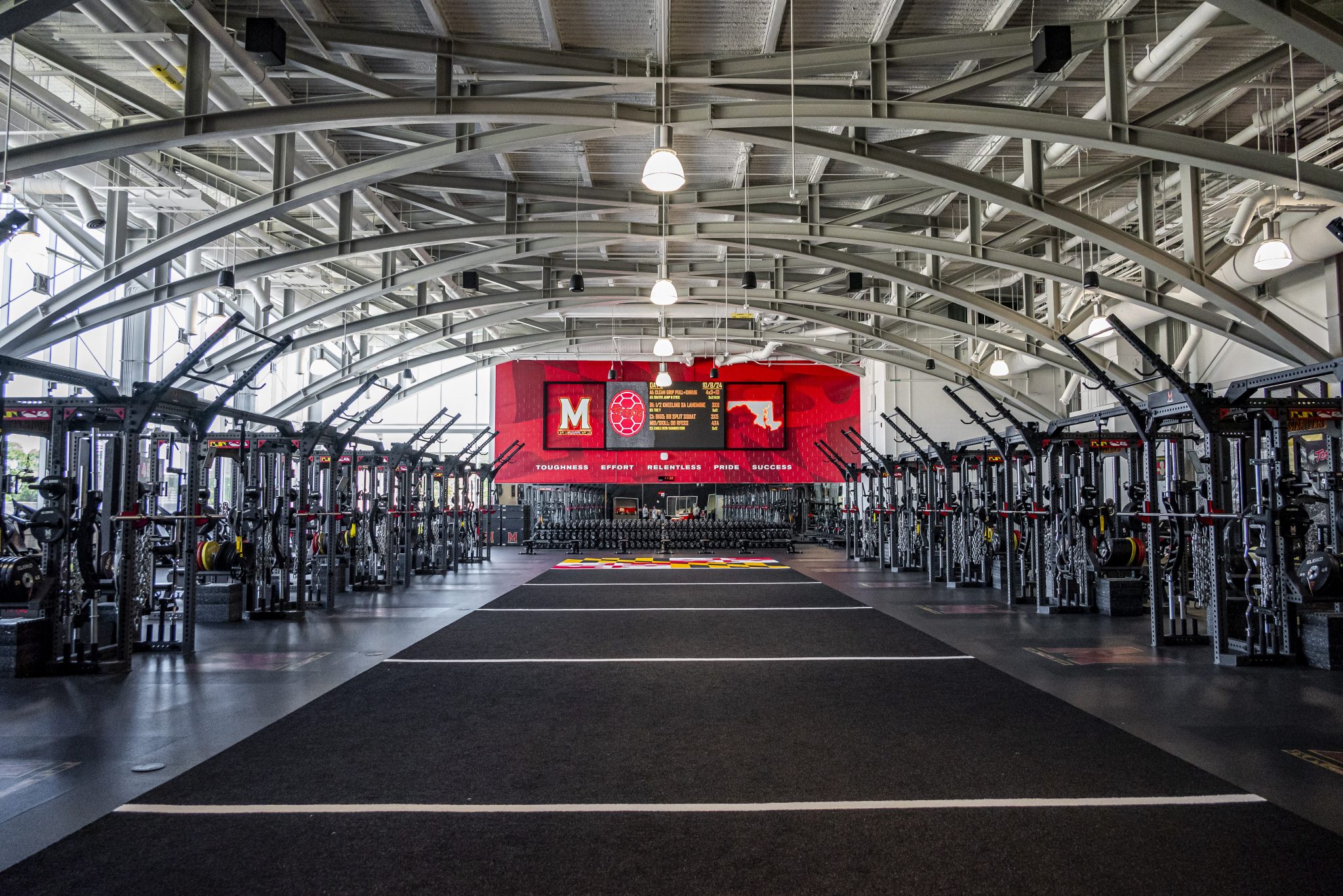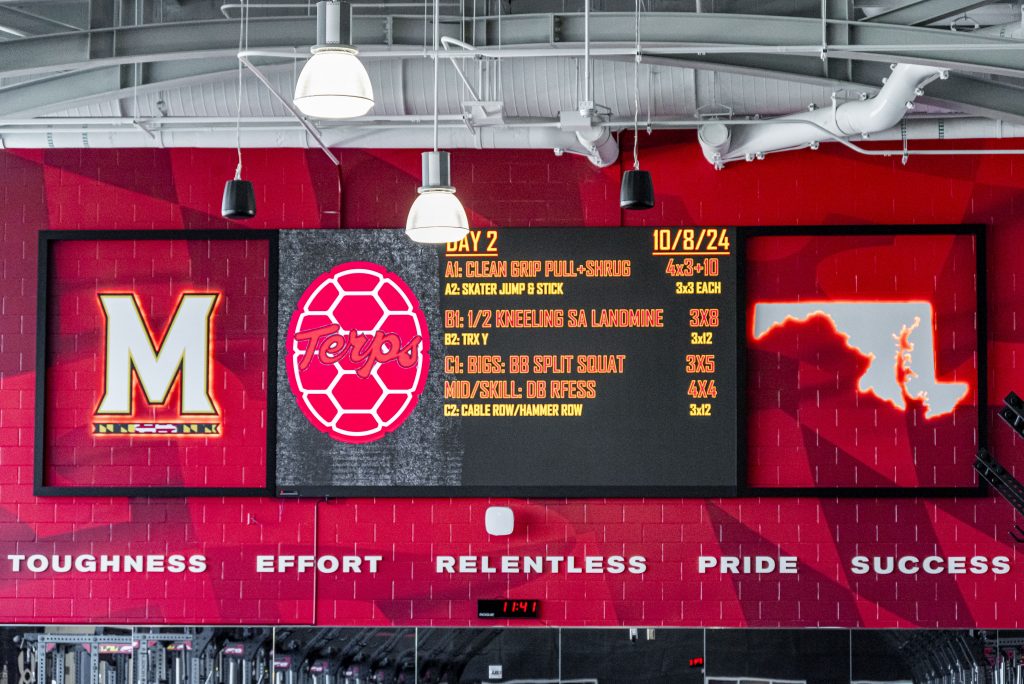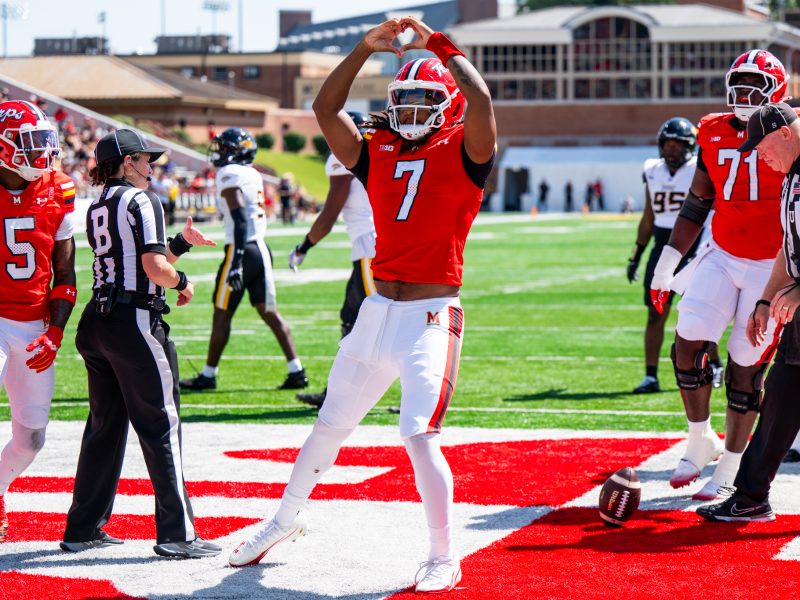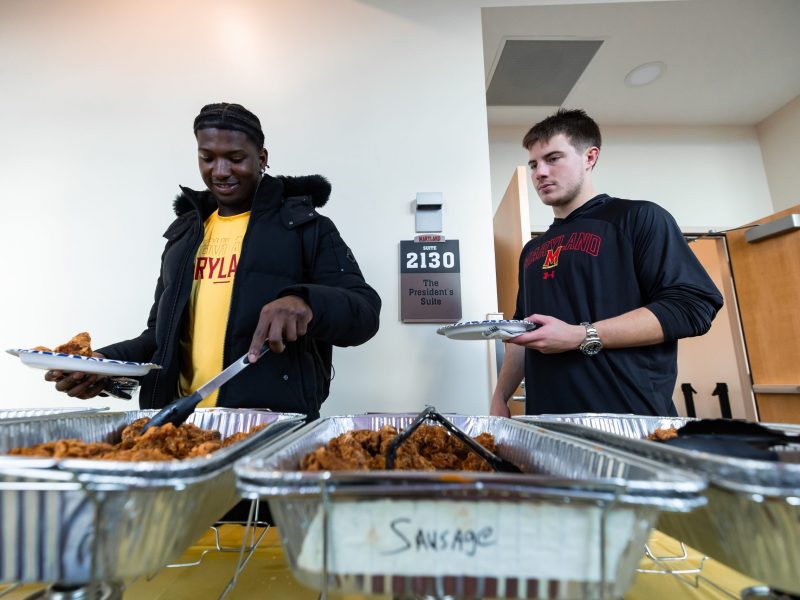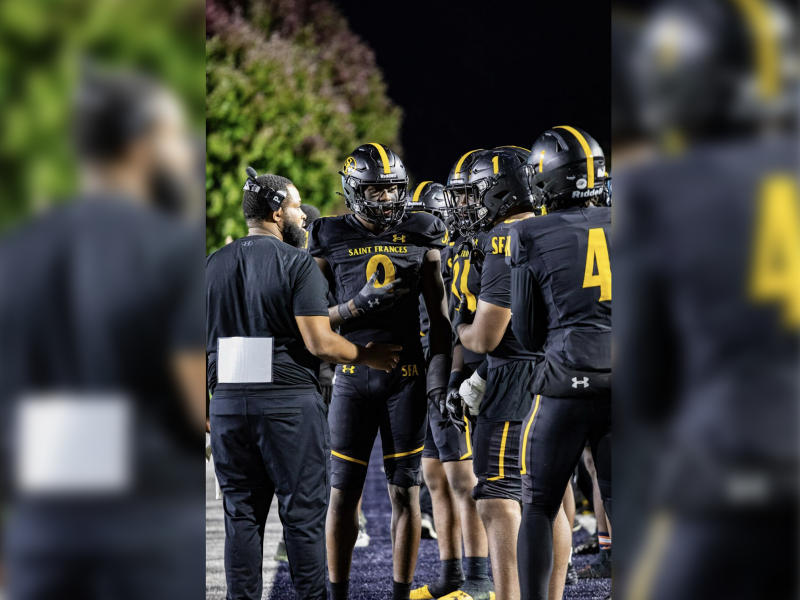Before Ryan Davis became Maryland football’s strength and conditioning director, he learned under two-time National Strength Coach of the Year Scott Cochran at Alabama.
Cochran showed Davis what changes he would make and why. Davis wanted to combine the “old school mentality” of hard work with a specific plan for each player, and Cochran let him challenge the system.
That was Davis’ goal when he joined the Terps in 2019. He’s found a balance between data and analytics in the weight room to improve players’ performance each week.
The Jones-Hill House, which opened in June 2021, includes a 24,000-square-foot strength and conditioning area. The facility came with data-driven weight racks through a partnership with Perch, a company founded in 2016 by two MIT students.
Nika Ouellette, Perch’s marketing and education head, said Davis was in contact with Perch since the the new facility was being planned. Perch incorporated Davis’ feedback into the product, which led to him joining the company’s performance advisory board.
“[Davis] sort of considers Maryland to be essentially a showroom of sorts for Perch,” Ouellette said. “They buy only what they believe in strongly.”
The technology features a weight rack attachment to monitor performance,a mounted camera and an infrared light at the top that senses the bar.
[PHOTOS: Maryland fans storm field after close win against USC]
Perch does not require cords or attachments, which shortens the process to change weights on the rack.
“For us, everything at this level is about time, so we want to be really efficient,” Davis said. “The NCAA gives us eight hours a week to train. We got to make sure we make the absolute most of it.”
Once players log into their profiles from a tablet on the weight rack, they can review the movements they will do, including the weight on the bar.
The technology can track the number of repetitions and “time under tension” — how long a player is under the bar — without the help of another person. It allows Maryland’s coaches to personalize lifts to maximize production.
Players can view their past workouts, how much weight they lifted and the number of repetitions they did.
Maryland’s sport scientists give Davis reports at the end of training days. The coaching staff ensures players hit their target marks. Once every three weeks, the Terps need to train at 85 percent of their maximum in different lifts.
Davis trains the Terps based on coach Michael Locksley’s overarching system. Davis has been in programs that separate strength training from on-field performance, but Locksley layers them together.
Locksley understands most of his recruits are still developing, so he works with Davis to get players in the best shape possible.
“If they’re getting bigger, stronger, faster in the weight room, that usually translates to them making plays on the field,” Locksley said. “That marriage is one that has to happen.”
[Maryland field hockey’s tenacious defense guided it to a win against Michigan]
Once Locksley structures players’ training focuses, Davis tailors the workouts for each position.
Skill position players get explosive workouts, while bigger athletes train based on a percentage of their weight. Mid-sized players such as tight ends may alternate weekly between “skill stimulus” and “big-guy stimulus” workouts.
“The field work has to coincide with what we do in the weight room,” Davis said. “Everything that we do in training has to be harder than what we do on Saturdays. That’s kind of how we build them.”
Senior wide receiver Tai Felton said Maryland’s rigorous offseason training prepared players for the grueling Big Ten slate, which entailed the Terps’ first conference win this season over USC Saturday. He appreciates Davis making workouts harder than the games themselves.
Davis displays the day’s workouts on a large screen down the hall from Maryland’s training room, and often creates live leaderboards using data from Perch.
The data drives competition. Maryland gets its best product on the field because of it.
“I do think we’re able to get more out of the guys because of the tools that we have in the room and the way that we use them,” Davis said.
